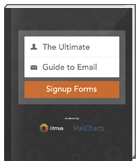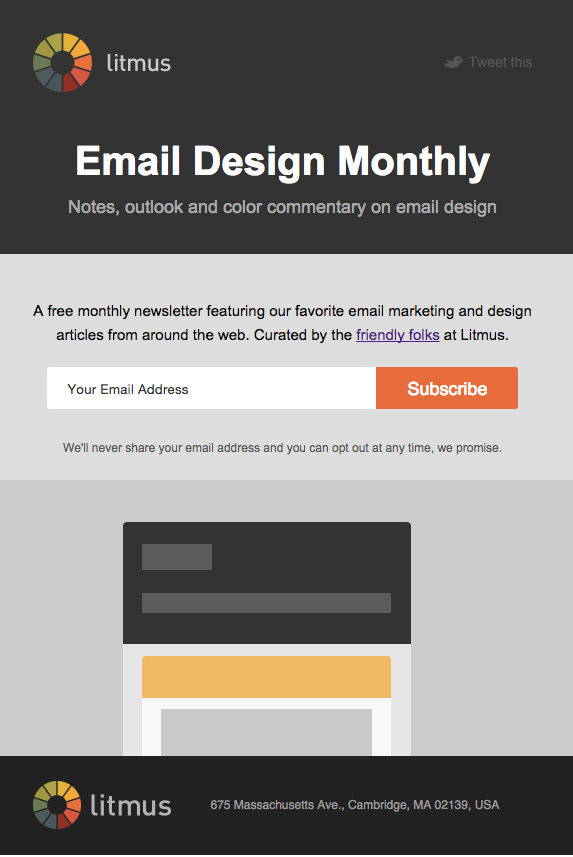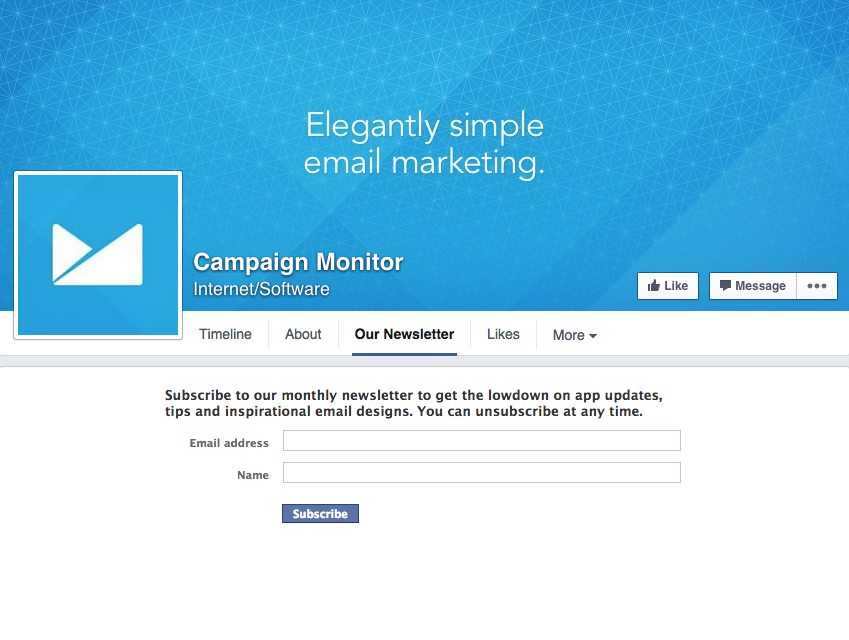6 Alternatives to Spending Thousands on an Email List
Email has the highest ROI across digital channels—and revenue from email has increased 28% in 2014. It’s no wonder that marketers are on the look out to grow their email lists quickly (and, hopefully, inexpensively).
Purchasing a list of email addresses may seem like a great solution, but it’s not.
While you get a list of leads instantaneously, there are some major drawbacks. It not only costs thousands of dollars, but purchasing a list can negatively affect your deliverability and sender reputation.
Under anti-spam laws, like the Canadian Anti-Spam Law, you cannot mail to those that did not opt-in to receive emails from you or partake in a business transaction with you. In addition, many Email Service Providers (ESPs) won’t let you send to a purchased list and, if you do, it can lead to an immediate termination of your account.
But, building a subscriber base is hard and without a good list, all of your hard email marketing work could be undervalued.
So what do you do? How do you grow your list with only opt-in subscribers?
Luckily, there are alternatives to building your lists—alternatives that are cost-effective and not detrimental to your sender reputation.
Optimize your signup forms
Signup forms should be easily accessible throughout your website.
Whether it’s a signup form on your blog to subscribe to new posts, or a form on one of your product pages to subscribe to product updates, forms should be prevalent throughout your site.
Potential subscribers should never have to search for a way to subscribe.
Your potential prospects are busy and don’t want to spend time filling out forms. For that reason, less is more when it comes to fields in signup forms—they should be ruthlessly stripped down to their minimum. Be strategic in the fields that you include (and A/B test to find the right mix of information).
Clearly indicate the value of what your subscribers will receive by signing up. They are giving you their email address—what are they getting in return?
Let them know about the valuable content they’ll receive, or a discount, or free swag. Make the benefit clear.
 | The Ultimate Guide to Email Signup FormsGrow your subscriber list by optimizing your signup forms and overall conversion path. Download the report to find out how. |
Provide multiple subscription options
As inboxes become more crowded, subscribers expect messages tailored to them. When it comes to email, the more relevant it is, the more successful it will be.
One way to provide subscribers with relevant content—and encourage potential subscribers to sign up for your emails—is by providing several subscription options. If someone only wants to subscribe to blog articles or a niche-specific newsletter, give them that option.
For example, you can subscribe specifically to our Email Design Monthly newsletter. It doesn’t opt subscribers in for other communications, so they are only receiving the content that they are interested in.

By providing different subscription options, potential subscribers will feel more in control of the emails they’ll be receiving and therefore more likely to sign up.
Host or participate in a webinar or event
Attending or hosting a virtual or in-person event enables you to reach new audiences—and collect new email signups. Requiring registration for the event—even if it’s not paid—is a great way to build your list.
Promote your event to your current subscribers and social media followers and encourage them to share it with others. We found that emails about an event were 3.2 times more likely to be shared, than those that were not. Include social sharing and “share with a friend” links to make it easy!
Participating in an event with a partner is another way to build lists by reaching new audiences.
If both parties promote the event to their respective audiences and offer opt-ins during the signup process, the potential to quickly add new subscribers is massive. Explicitly add a checkbox that indicates which company potential subscribers will be receiving emails from.
Offer opt-in incentives
One of the easiest ways to grow your list is by requiring visitors to provide their email addresses in order to view a piece of content.
You already have the content ready—so why not require visitors to fill out a form to download it? It’s a swap—you get their email address, they get a valuable piece of content.
While we definitely don’t recommend gating every piece of content; ebooks, reports, whitepapers, Slideshare presentations, and videos are all lead generation opportunities.
Collect email addresses on social media
Promoting your newsletter on social media is a great way to collect new signups with ease.
Share past emails so your followers have an idea of what type of content they would be receiving—and link to your subscription center.
Twitter’s Lead Generation Cards allow you to attach a form to your tweet so that subscribers can send you their contact information with a single click. (They don’t have to fill out any forms!)
These cards sync with the majority of ESPs so any signups go directly into your database. In addition, you can create them for free and promote them to your followers, or pay to target them to a larger audience. MailChimp grew one of their lists by 12% through this method!

With Facebook’s call-to-action button, you can add a newsletter signup directly on your page. Or, you can create a tab for email signups within your account.
Potential subscribers don’t have to go to your site to sign up for your emails—they can do it directly on your social media page.
Campaign Monitor uses this technique.

Send emails that gets shared
Your current subscribers are a great avenue to reach new subscribers. By encouraging your subscribers to forward and share your email, you’re expanding the reach of your messages and increasing the possibility of additional conversions.
You explicitly ask your subscribers to “download” an ebook or “signup” for a free trial, so why not ask them to share your email?
We found that emails with “share with your network” calls-to-action were 13 times more likely to be shared that the typical email.
In addition, emails that were personalized, or focused on events, helpful content, or transactional updates were more likely to be shared.
For more tips on sending emails that get shared, download The Viral Email Report.
Subscribe to get more helpful tips
We couldn’t write a post about growing your subscriber list without including a signup form, could we? Subscribe to our monthly newsletter to get the latest email tips and tricks delivered straight to your inbox a few times a month.

Lauren Smith
Lauren Smith is the VP of Acquisition & Lifecycle Marketing at Litmus
